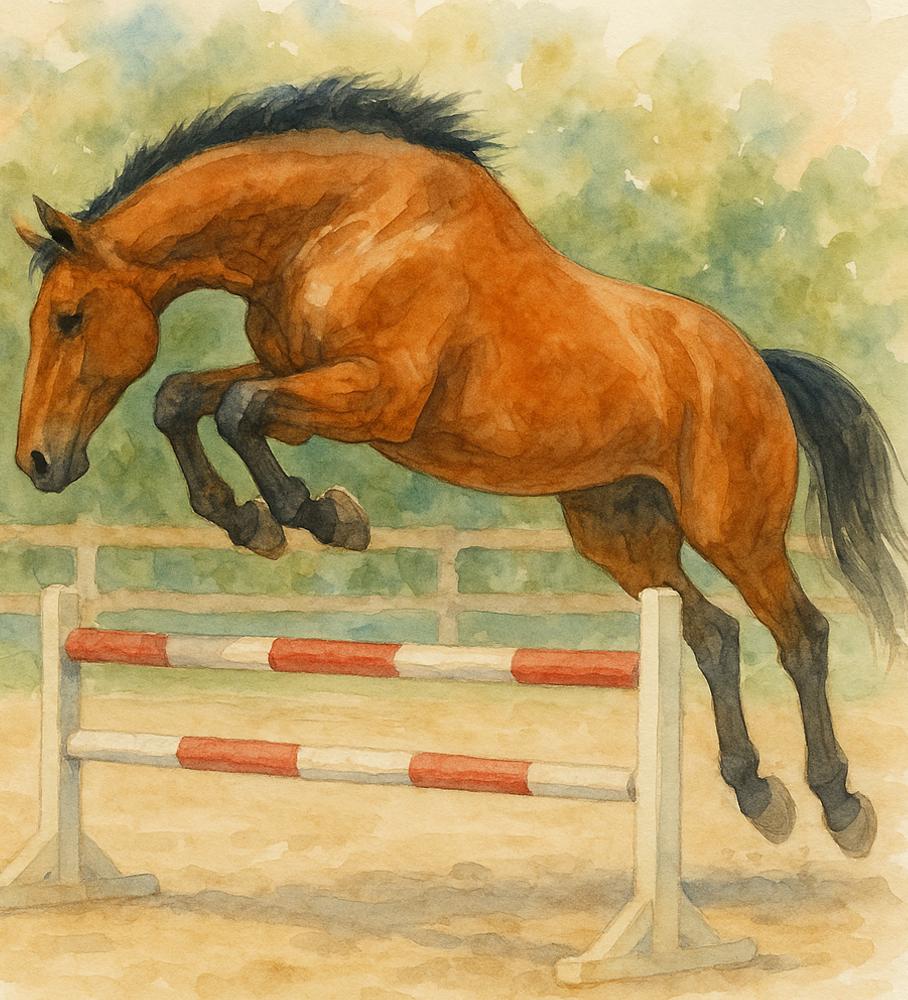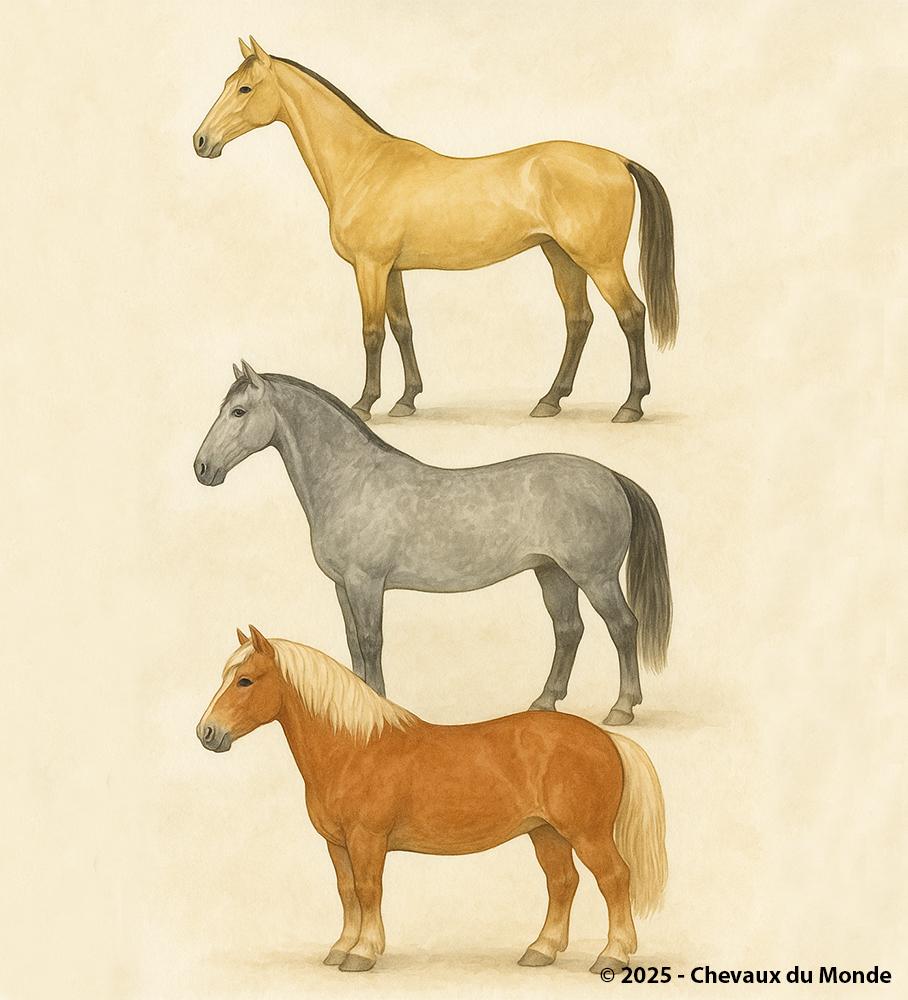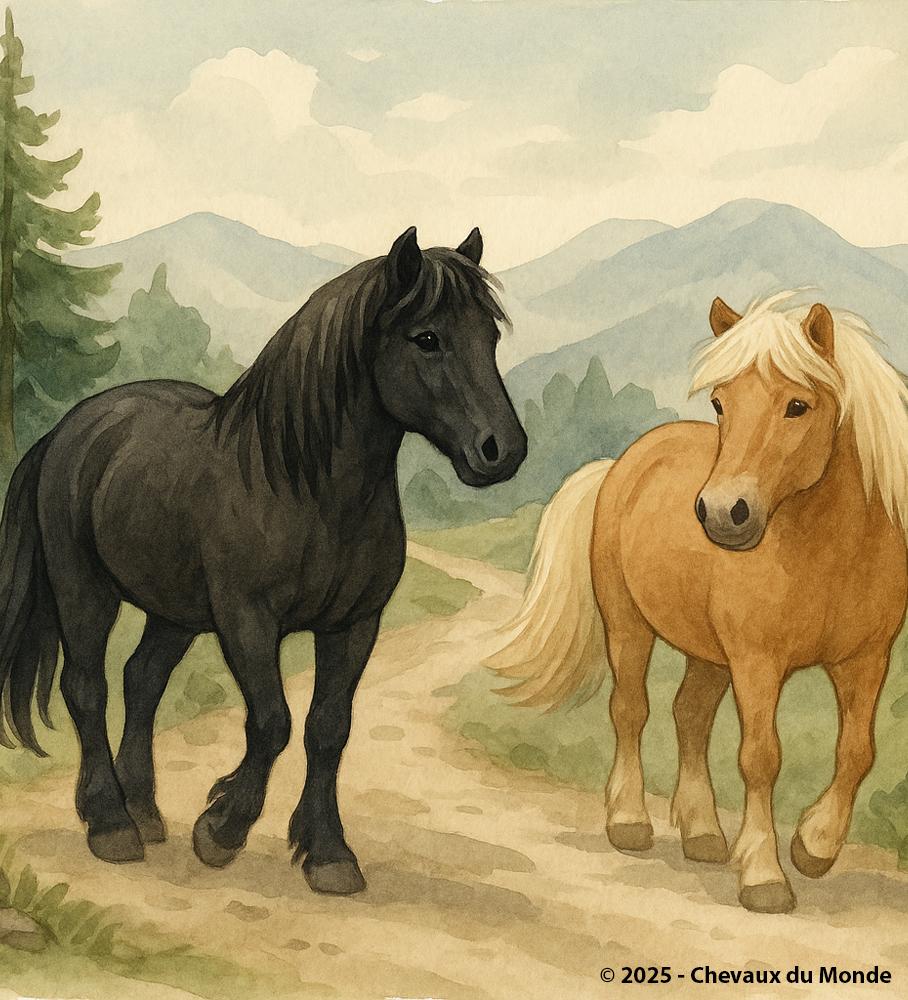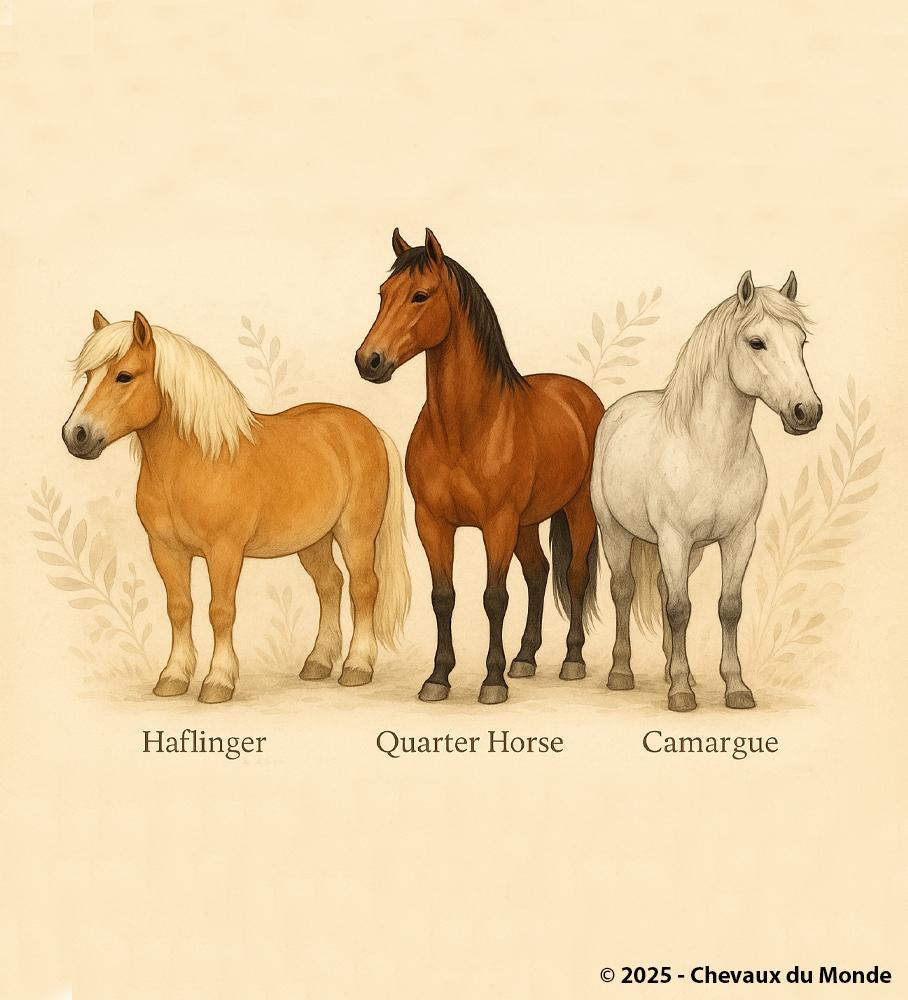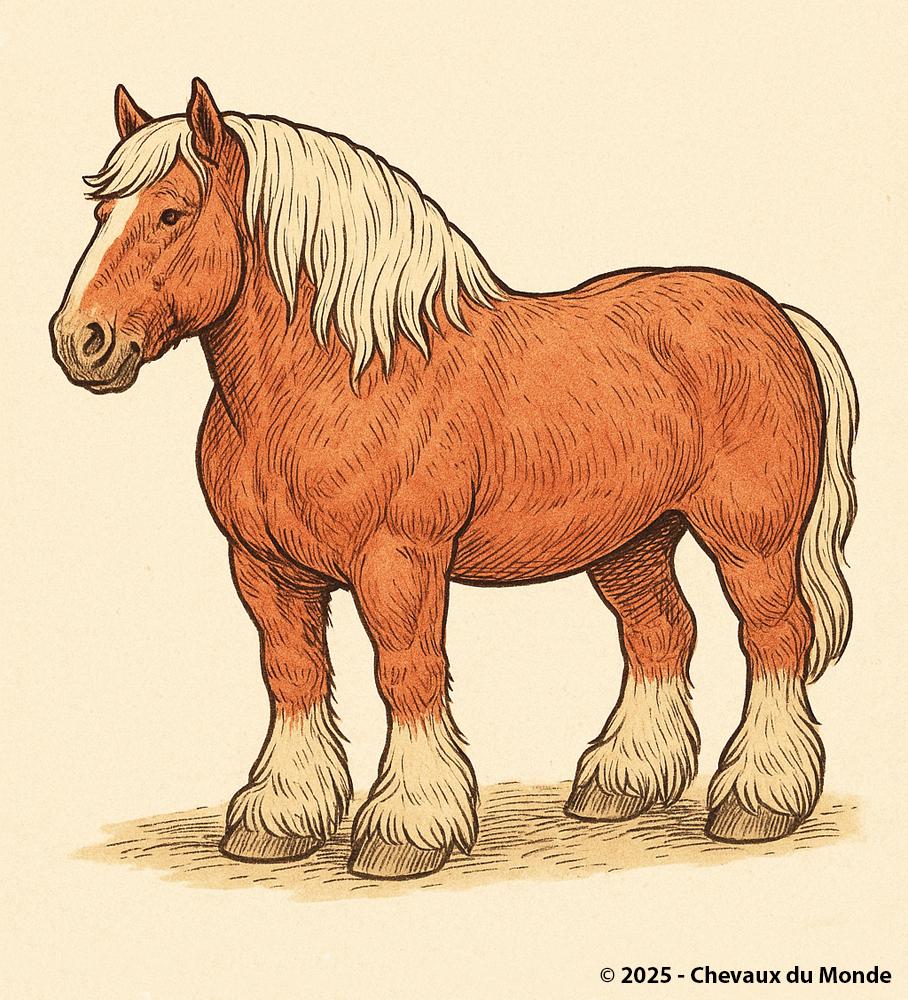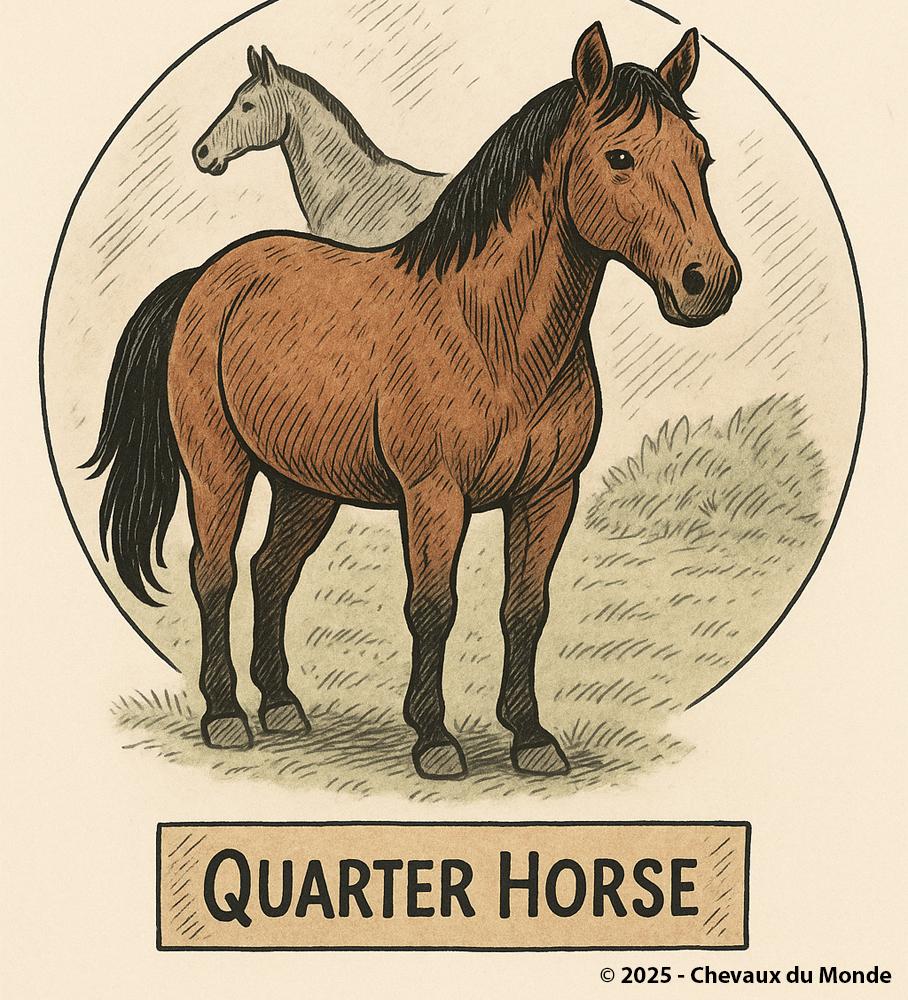THE MOST POPULAR HORSE BREEDS BY CONTINENT
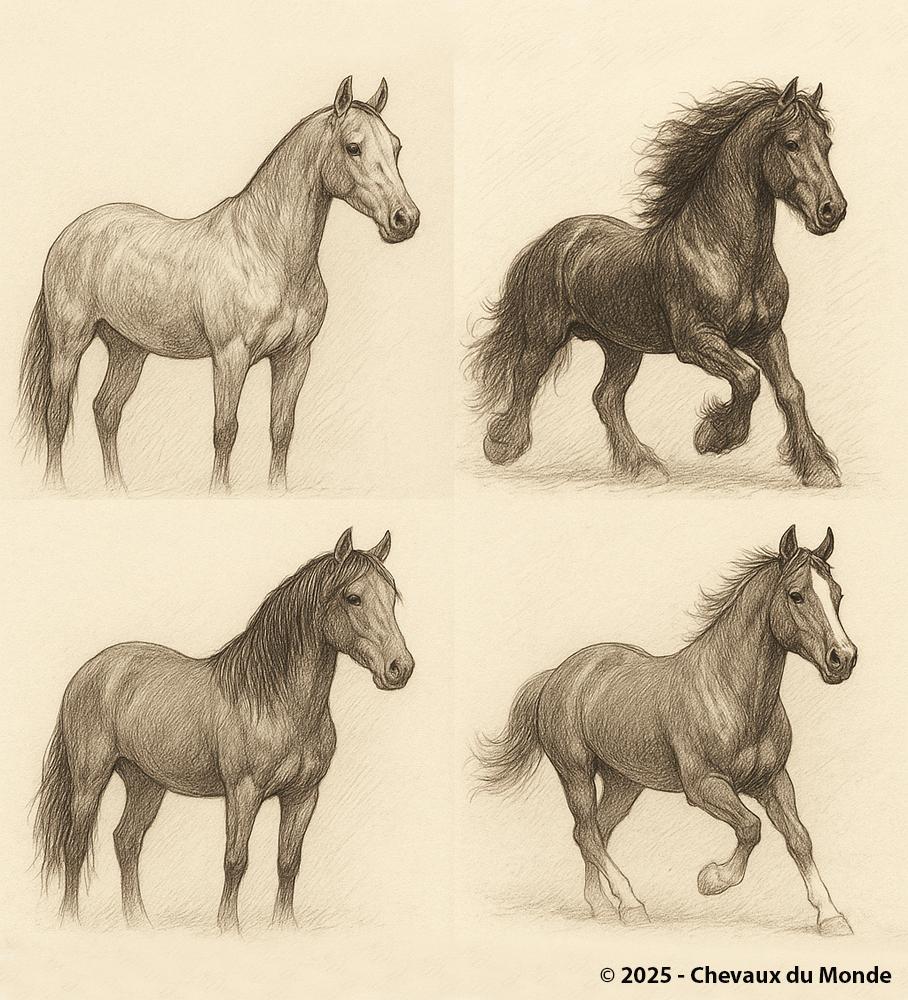
Global diversity: each continent has developed iconic horse breeds shaped by its needs, climate, and equestrian culture.
The horse is a universal heritage, present on every continent and shaped by history, culture, and the needs of peoples. Each region of the world has produced emblematic breeds, which have become symbols of prestige, work, or sport. This article provides an overview of the most popular horses, continent by continent.
Europe: Between Tradition and Equestrian Sport
The Thoroughbred
Originating in the United Kingdom, the Thoroughbred is the world’s most widespread racehorse breed.
Renowned for its speed and stamina, it has influenced many other sport horse breeds.
The Friesian
From the Netherlands, the Friesian is admired for its baroque charm, black coat, and striking presence.
Very popular in equestrian shows and carriage driving.
The Selle Français
The quintessential French sport horse.
Famous for show jumping and eventing.
North America: From Working Horses to Icons
The Quarter Horse
Considered the most popular horse in the world by number of individuals.
Used in ranch work, but also in Western disciplines such as reining and cutting.
The Mustang
The iconic wild horse of the American West.
Descended from Spanish horses introduced in the 16th century.
The Morgan
The first officially recognized breed in the United States.
Appreciated for its versatility and historic role in the U.S. cavalry.
South America: Elegance and Hardiness
The Criollo
From Argentina, symbol of the gauchos.
Extremely hardy, capable of covering long distances.
The Peruvian Paso
Known for its unique and comfortable gait: the paso llano.
Highly valued for trail riding and traditional performances.
The Mangalarga Marchador
The national breed of Brazil.
Famous for its marchador gaits (batida, picada), both unique and smooth.
Asia: Prestige and Mythical Horses
The Akhal-Teke
From Turkmenistan, nicknamed the “Golden Horse”.
Celebrated for its metallic sheen and endurance.
The Marwari
A breed from Rajasthan (India), recognizable by its inward-curved ears.
A symbol of nobility and spirituality.
The Przewalski’s Horse
The last truly wild horse in the world, native to Mongolia.
A protected species, reintroduced into the steppes.
Africa: Hardiness and Adaptation
The Barb
From North Africa, renowned for its sobriety and resistance.
Once a war horse, still used today in the fantasia.
The Basuto Pony
Developed in Lesotho, descended from crossbreeding with ponies.
Small, hardy, and adapted to mountain terrain.
The Dongola
An ancient African breed, found notably in Sudan and Nigeria.
Used in ceremonies and local racing.
Oceania: The Heritage of Settlers
The Australian Stock Horse
Descended from British and Arabian horses brought to Australia.
A versatile breed, used for cattle work and equestrian sports.
The Brumby
A feral horse of Australia, descended from settlers’ stock.
A symbol of freedom, but also a subject of ecological management debates.
Conclusion
Each continent has shaped horses adapted to its needs, climates, and cultures. Whether the American Quarter Horse, the European Friesian, the Asian Akhal-Teke, or the African Barb, these breeds reflect the richness and diversity of the equine world.
"The horse, beyond continents, is a universal bond between peoples."

